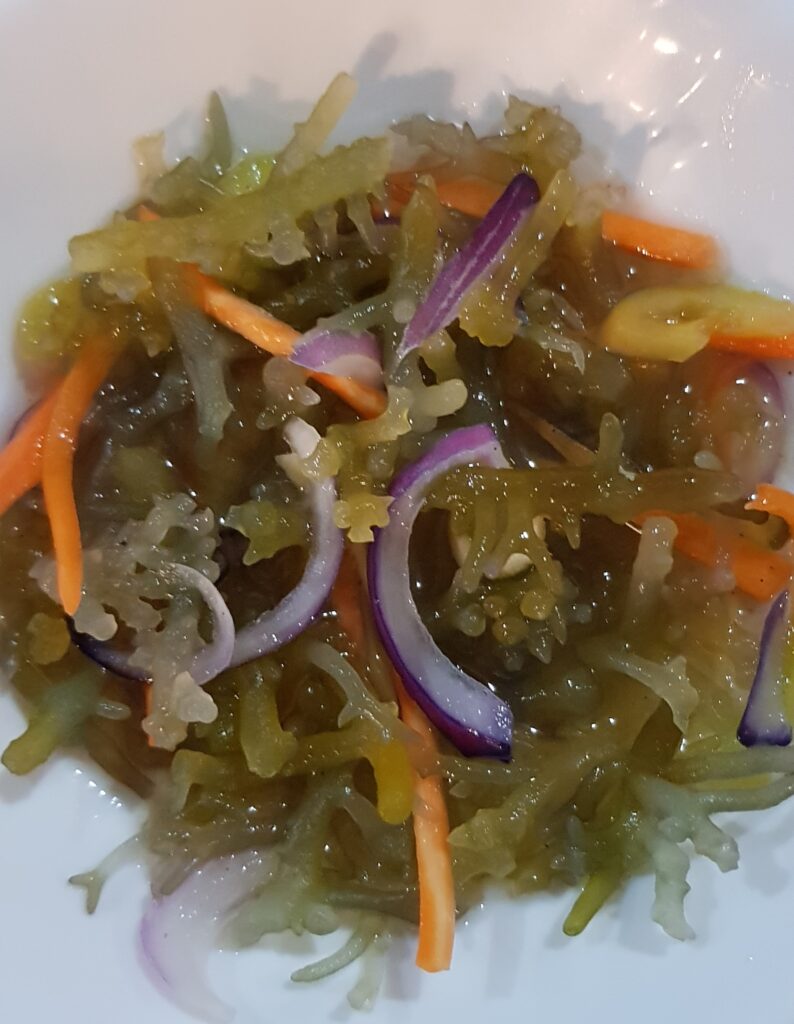

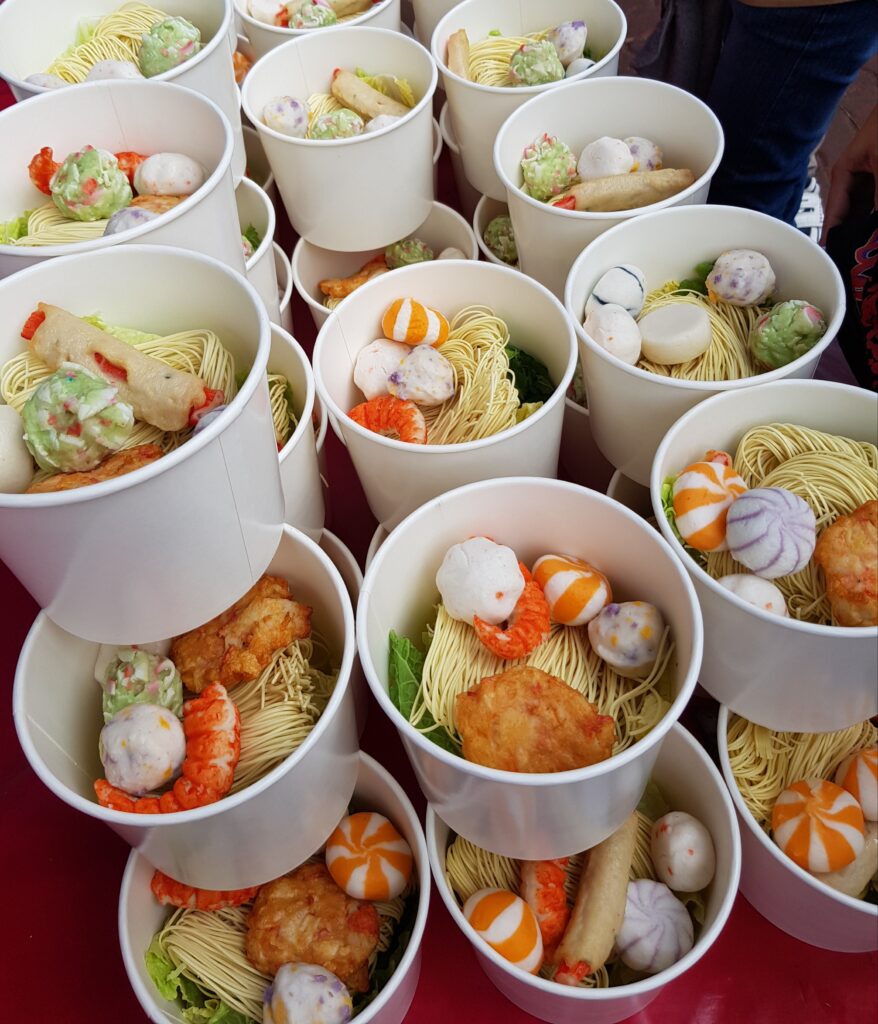
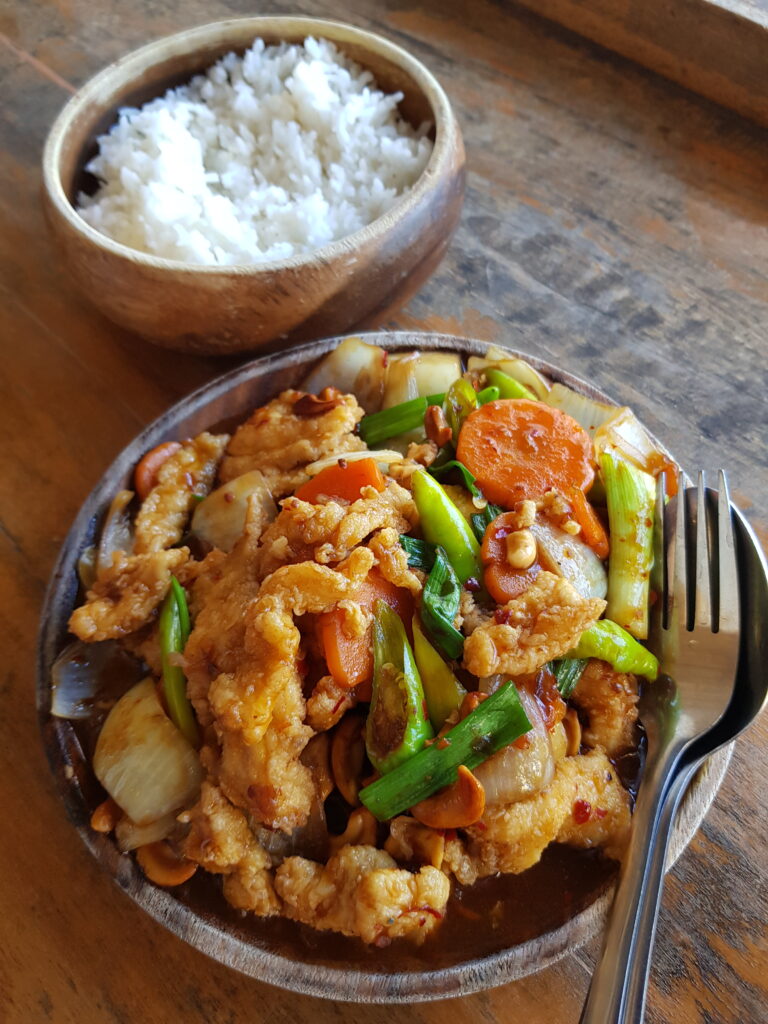
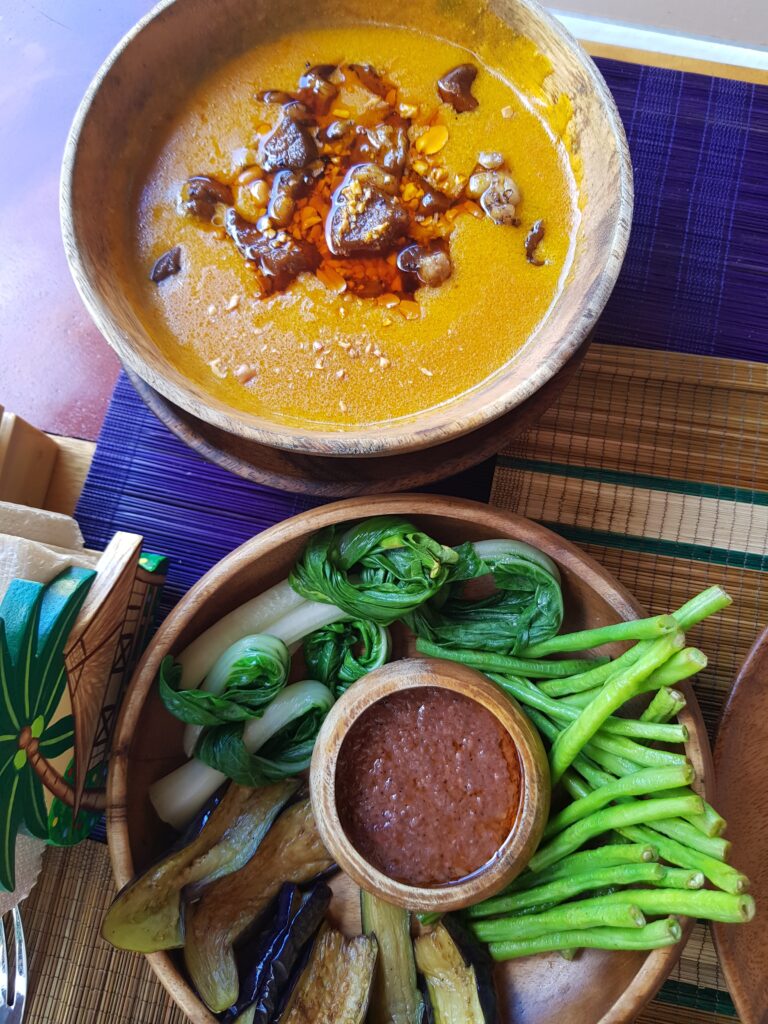
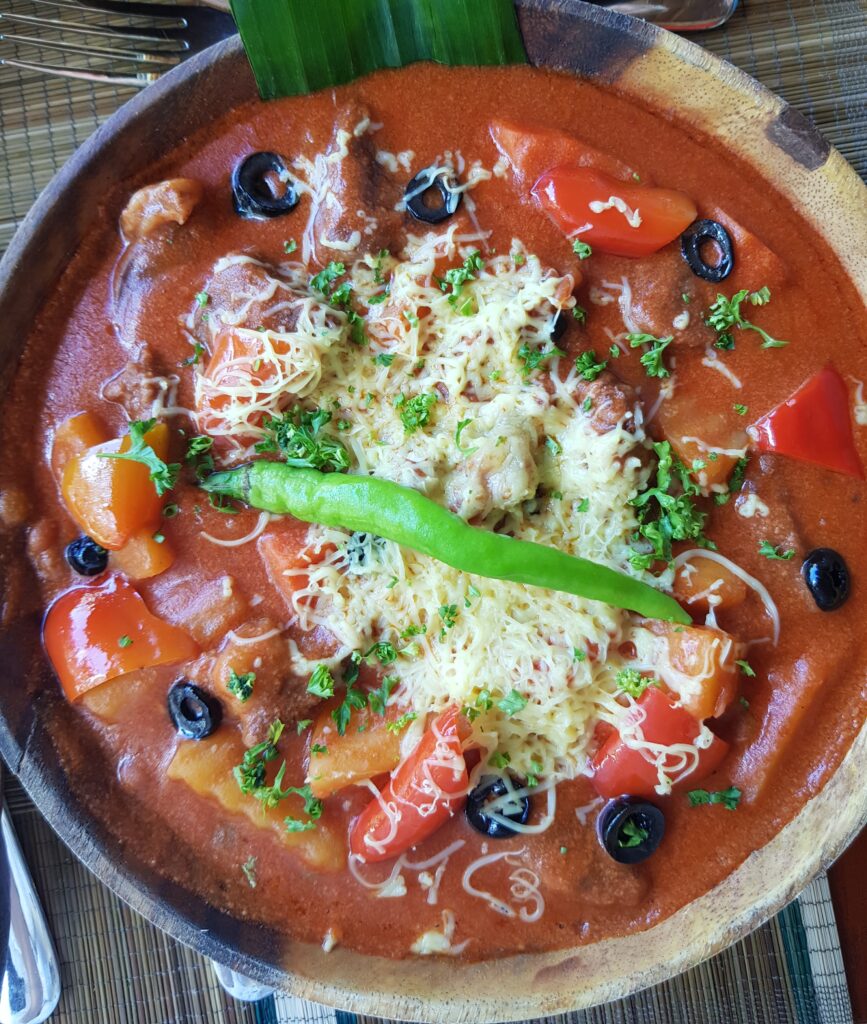
- Traditional Cuisine
- Eating Healthy – Not So Easy
- Plastic Overload in Fruits and Vegetables
- Food in Guesthouses
- Pinakbet
- From Adobo to Sinigang
- Drinks
Food & Drink in the Philippines
Traditional Cuisine
The Philippines is not typically regarded as a culinary destination on the international stage – at least not compared to other Southeast Asian countries like Thailand, Vietnam or Japan. This perception stems from various factors but doesn’t necessarily reflect the diversity or quality of traditional Filipino cuisine, which is often underestimated and less well-known. While it may have a modest image, a closer look (or taste) reveals many unique and delicious dishes such as adobo, pinakbet, and sinigang.
Despite this rich culinary variety, unhealthy eating habits are widespread in the Philippines. Fast food and overly sugary drinks contribute to growing health challenges.
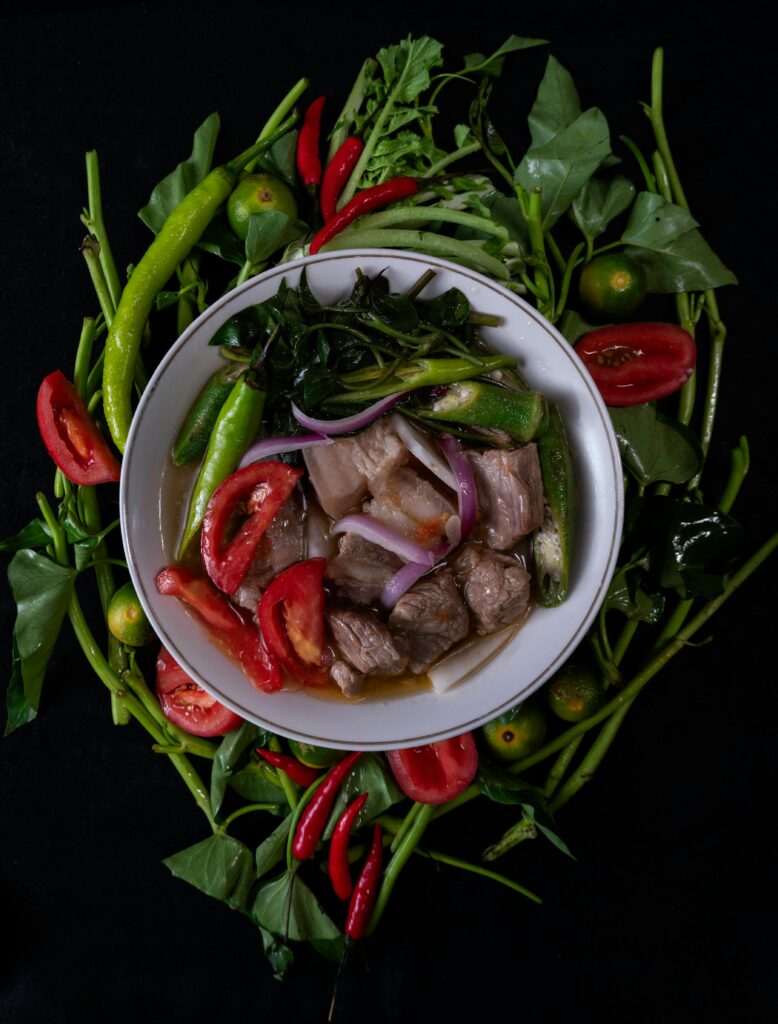

Eating Healthy – Not So Easy
Food in the Philippines is heavily influenced by cultural elements from China, Spain and especially the United States – with the latter often to the detriment of public health. Particularly in urban areas, fast food dominates the culinary landscape, whether as street food or in restaurants. The emphasis is typically on high fat, sugar, and meat rather than freshness and herbs. This dietary shift has consequences: calorie-dense, nutrient-poor foods are increasingly consumed, contributing to a rise in overweight and obesity – especially in cities and among children. At the same time, growing physical inactivity, such as long hours of screen time, adds to the negative health effects.
Traditionally, Filipino diets were more balanced: rice, vegetables, and a small portion of fish or meat formed the core of daily meals. Over the past decades, however, this balance has changed significantly. In many regions, meals have become more meat-heavy, with meat often grilled excessively – sometimes even charred. Highly processed foods, sugary snacks, and soft drinks are now widespread. Even healthy alternatives like naturally sweet fruit smoothies are often heavily sweetened with added sugar. As a result, the number of overweight individuals is rising, while undernutrition remains a serious issue in some parts of the country.
Recently, however, a growing movement toward healthier eating has emerged – especially in Manila. While not yet widespread, this trend is steadily gaining ground, offering a hopeful outlook.
Plastic Overload in Fruits and Vegetables
In the Philippines, it is common for fruits and vegetables to be sold in supermarkets wrapped in plastic. This practice is primarily intended to preserve freshness and protect the produce from dirt and insects. Convenience for both vendors and customers also plays a role.
However, the excessive use of plastic contributes significantly to the country’s waste problem. As a result, a growing number of local people are calling for sustainable alternatives and a reduction in single-use plastics. This issue is gaining importance, especially as awareness of healthy eating and environmental protection continues to grow.
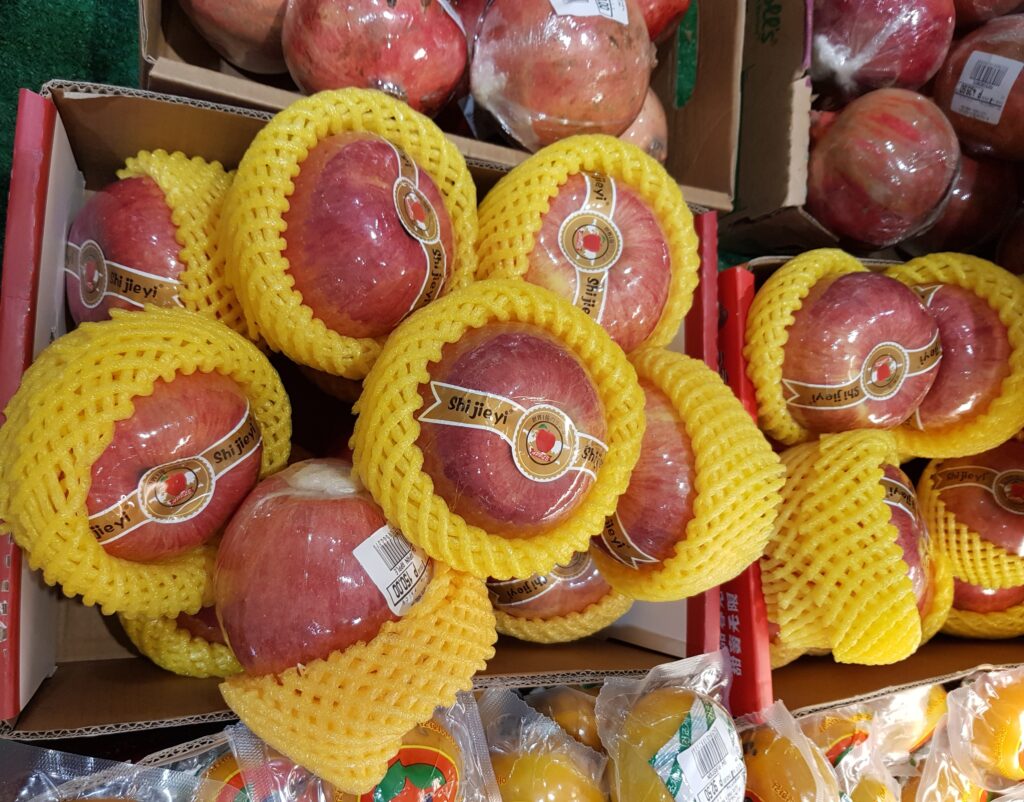

Food in Guesthouses
While traveling, it wasn’t always easy for us to find healthy food. Many dishes were heavily fried, very meat-heavy, or prepared with a lot of sugar. We also didn’t want to rely solely on fresh fruit – as delicious as mangoes, papayas and the like are, it felt too one-sided in the long run.
We ate best in the small guesthouses where we stayed overnight. Meals were freshly cooked, and our Filipino hosts were happy to prepare food with little or no sugar. Upon request, there was plenty of vegetables, sometimes even from their own garden. For us, this was the healthiest and most authentic way to experience Filipino cuisine. It also gave us the chance to try some traditional dishes.
Pinakbet
Pinakbet is a traditional Filipino vegetable dish. It consists of a colorful mix of regional vegetables such as bitter melon (ampalaya), pumpkin, okra, eggplants, beans, and sometimes tomatoes. The dish is seasoned with bagoong, a fermented shrimp or fish paste that gives it its distinctive savory and slightly salty flavor.
Pinakbet is high in fiber, rich in vitamins, and despite its strong taste, low in calories – provided it isn’t drowned in oil, which unfortunately sometimes happens. We enjoyed pinakbet best when it was freshly prepared and not too salty – perfect as a side dish to rice or even on its own. It’s a dish that shows how delicious and healthy regional food can be.
Originally, pinakbet was a simple farmer’s meal: whatever grew in the garden went into the pot. Meat was rare or only added in small amounts, such as some pork belly or dried fish for extra flavor.
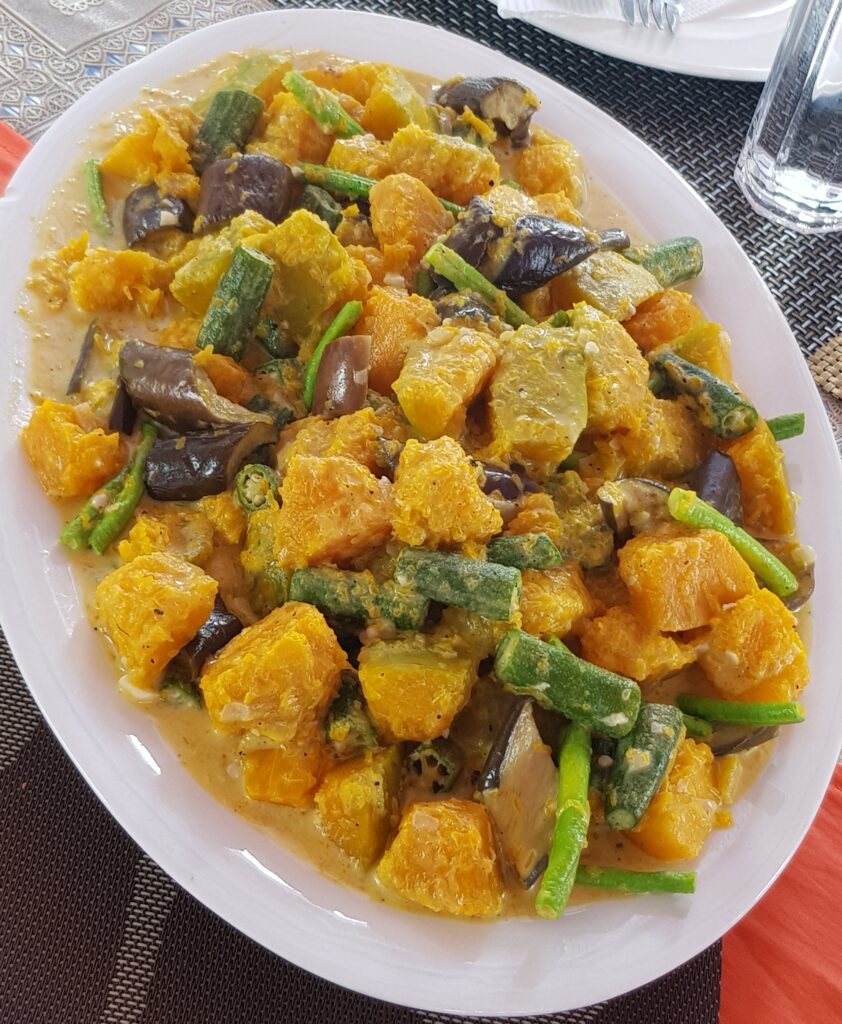
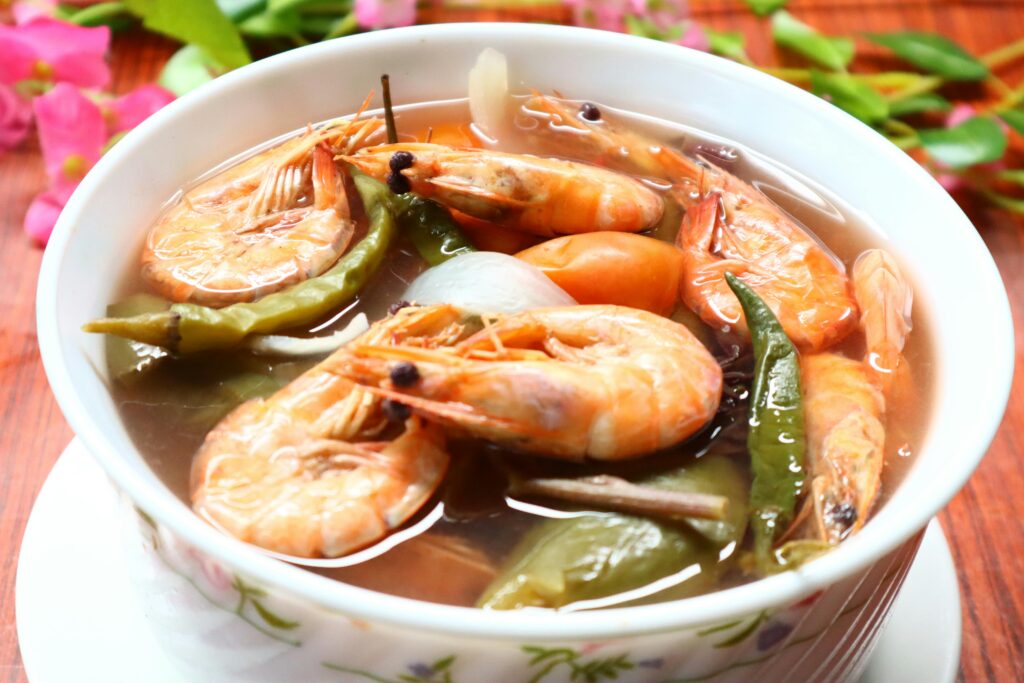
From Adobo to Sinigang
Adobo is considered the unofficial national dish of the Philippines: meat – usually chicken or pork – is slowly braised in a savory marinade of soy sauce, vinegar, garlic, and bay leaves. If you prefer something more fruity and sour, you should try sinigang: a tamarind-based soup with meat, fish, or shrimp, and plenty of fresh vegetables. Kare-kare is a traditional Filipino stew in a creamy peanut sauce, often served on special occasions or at family gatherings. Laing is a dish from the Bicol region, known for its spicy and creamy flavor. Dried taro leaves are slowly cooked in coconut milk along with onions, garlic, ginger, and chili. In addition to many other dishes, such as the Filipino noodle dish pancit, there’s also balut, perhaps the country’s most famous (or infamous) delicacy: a fertilized duck egg that the brave enjoy with a bit of salt and vinegar. It was offered to us, but we didn’t try it.
Drinks
Cold, sweet refreshments are especially popular: iced tea, colorful fruit juices and creamy smoothies – often with lots of sugar and sometimes enriched with condensed milk. Soft drinks like cola or local brands are ubiquitous and enjoyed by both young and old. Coffee also holds a firm place: it’s usually instant coffee, brewed strong and served with plenty of sugar and sweetened condensed milk.
For those who prefer something more natural, fresh coconut water served straight from the nut is a favorite – a natural drink that refreshes and provides essential minerals. Also popular is salabat, a traditional ginger tea that not only warms the body but is also commonly used for sore throats and to support the immune system.
In some regions, you’ll also find homemade herbal or rice teas, as well as drinks made from pandan leaves, whose aroma is reminiscent of vanilla.
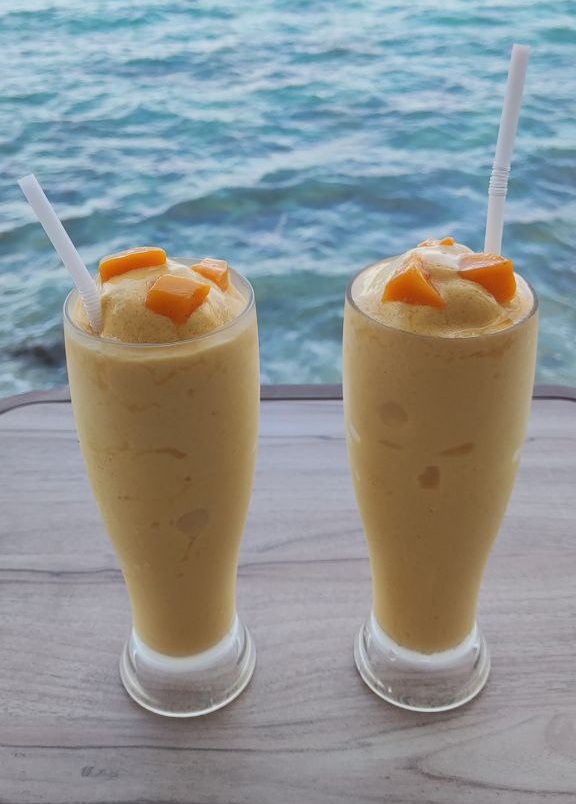




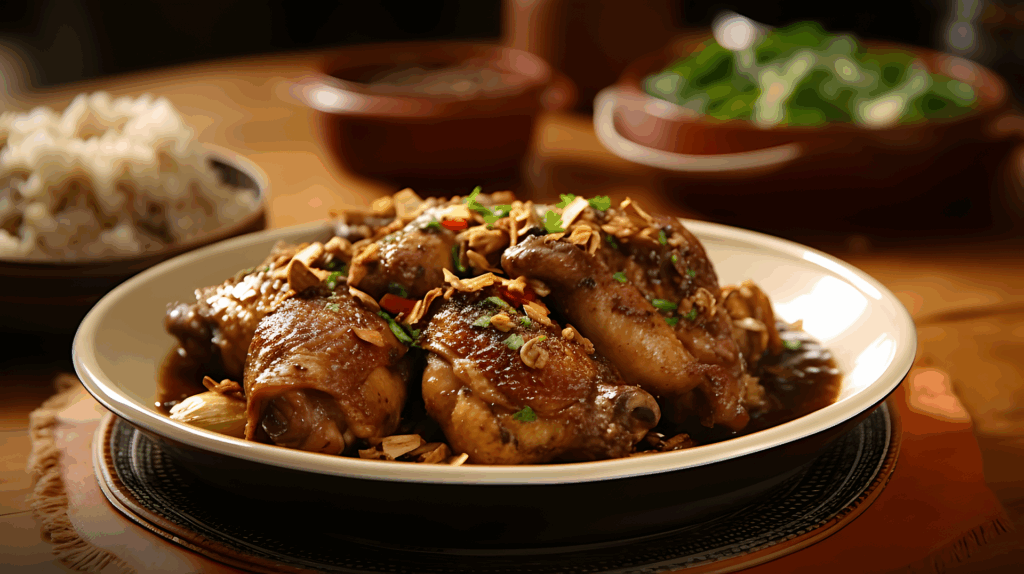
Leave a Reply